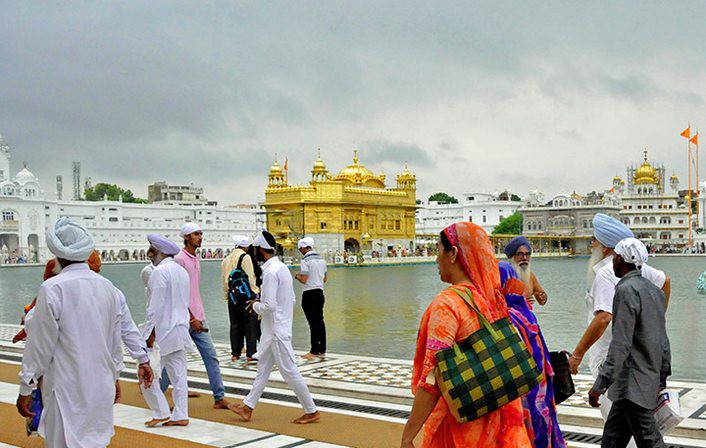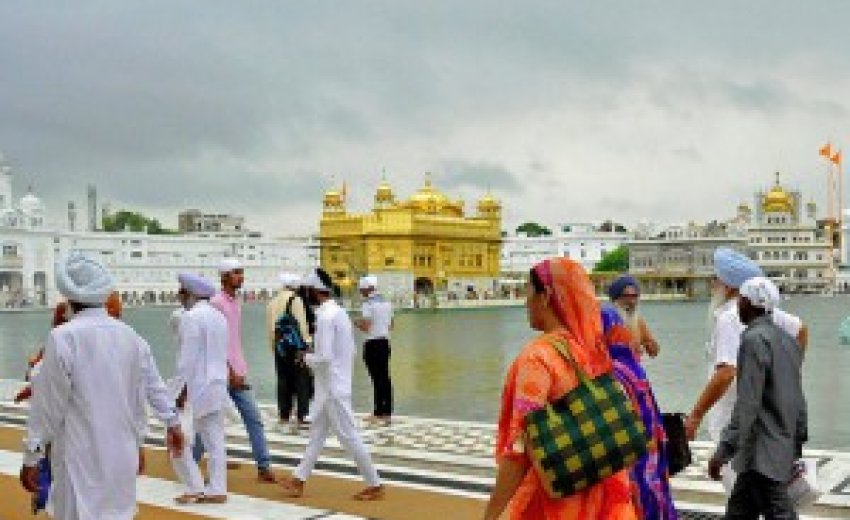Editor's note: This article comes from a local newspaper in the Indiana city of Fisher educating the public about Sikhism.
 |
| Harimandir Sahib (Photo by Don Knebel) |
Commentary by Don Knebel
September 6, 2016: The Golden Temple in Amritsar, India, is the holiest spot on earth for millions. The people who worship there provide an example of living out the teachings of one’s religious beliefs.
In the 15th century, Guru Nanak, the founder of Sikhism, came to a tranquil lake in the Punjab region of northwest India to meditate. That lake and the city that grew up around it became known as “Amritsar,” the tank of immortal nectar. Beginning in 1577, the fifth guru of Sikhism squared the lake and erected a gurdwara, or temple, in the middle of it to hold the Granth Sahib, the holy scriptures of Sikhism. The temple, officially named “Harmandir Sahib,” the abode of God, was modified to its current configuration in the 18th century. In the early 19th century, Maharaja Ranjit Singh, a Sikh ruler, covered the exterior with gilded copper, giving the temple its popular name. The square temple, resting on a square platform, has four entrances, symbolizing the Sikh teaching that all people and religions are entitled to equal respect. The temple’s design incorporates both traditional Hindu and Islamic elements, again reflecting the spiritual tolerance at the heart of the Sikh religion.
Each day, from before dawn to past sunset, more than 100,000 visitors from around the world, with bare feet and covered heads, silently file past the original Granth Sahib, housed on the first floor of the Golden Temple. Musicians sitting beside the holy book, considered the Sikh’s 11th and final guru, chant hymns, accompanied by instruments. Before entering, some worshippers bathe in the lake, purifying their souls. Afterwards, visitors of any faith can enjoy a free meal of lentils and flatbread prepared by legions of volunteers working in a huge kitchen nearby. For Sikhs, faith is as much a matter of doing as believing.

